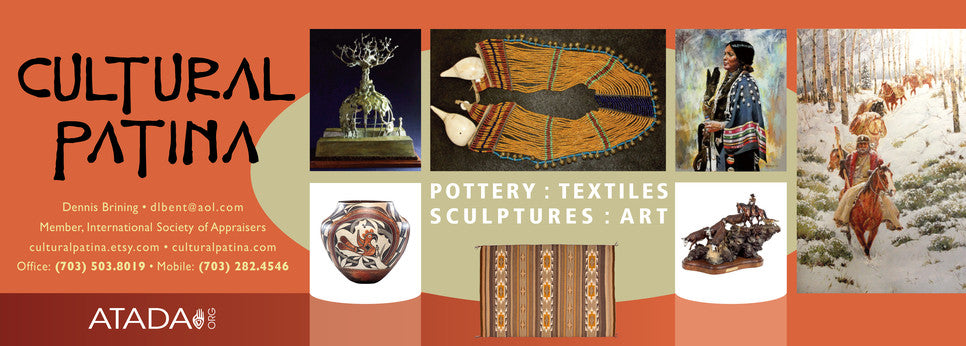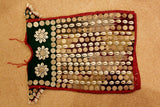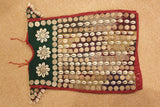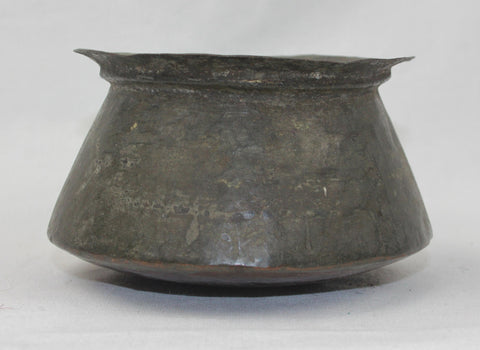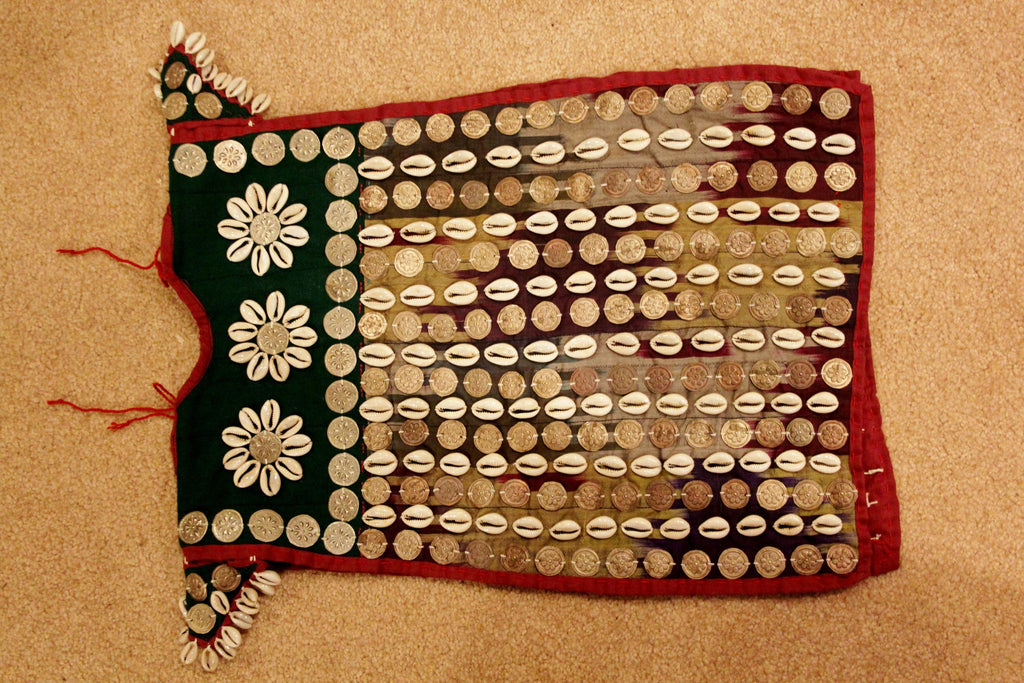
Ethnic Afgan Uzbek Handmade Nomads Baby Dress, Ca 1960's, #1521
$ 1,330.00
Ethnic Afgan Uzbek Handmade Nomads Baby Dress, Ca 1960's, #1521
Description: #1521 Ethnic Afgan Uzbek Handmade Nomads Baby Dress, Ca 1960's.Handmade with vintage, Handmade, Cotton. The Dress is decorated by hand with tassels, metals, shells , beads and other ornaments also. It is completely made by hand and very protective against the evil eye and for any negative meaning and looking. Face of Front & Back are almost the same heavily adorned with all of these materials and it is a one of kind piece of Art for home decor and wall handing.
Dimensions: Height : 50 cm, Length: 36 cm
Condition: Very good condition
Uzbek, any member of a Central Asian people found chiefly in Uzbekistan, but also in other parts of Central Asia and in Afghanistan. The Uzbeks speak either of two dialects of Uzbek, a Turkic language of the Altaic family of languages. More than 16 million Uzbeks live in Uzbekistan, 2,000,000 in Afghanistan, 1,380,000 in Tajikistan, 570,000 in Kyrgyzstan, and smaller numbers in Kazakhstan, Turkmenistan, and Sinkiang in China.
The Uzbek designation is thought to refer to Öz Beg (Uzbek), the Mongol khan under whom the Golden Horde attained its greatest power. The Uzbeks grew out of a mingling of ancient, settled Iranian populations with a variety of nomadic Mongol or Turkic tribes that invaded the region between the 11th and the 15th century. The former were ethnically similar to the Tajiks, and the latter included Kipchaks, Karluks, and Turks of Samarkand (relatively more Mongolized groups). A third element was added with the invasion of Mongol nomadic tribes under the leadership of Muḥammad Shaybānī Khan in the early 16th century.
The great majority of Uzbeks are Sunnite Muslims of the Ḥanafī rite, a group noted for the acceptance of personal opinion (raʾy) in the absence of Muslim precedent. The Uzbeks, especially the urban Uzbeks, are considered to be the most religious Muslims of Central Asia; early marriages for young girls, bride-price, and religious marriages and burials are among the traditions still practiced. The Uzbeks are the least Russified of those Turkic peoples formerly ruled by the Soviet Union, and virtually all still claim Uzbek as their first language. (Source: Encyclopedia Britannica)
Dimensions: Height : 50 cm, Length: 36 cm
Condition: Very good condition
Uzbek, any member of a Central Asian people found chiefly in Uzbekistan, but also in other parts of Central Asia and in Afghanistan. The Uzbeks speak either of two dialects of Uzbek, a Turkic language of the Altaic family of languages. More than 16 million Uzbeks live in Uzbekistan, 2,000,000 in Afghanistan, 1,380,000 in Tajikistan, 570,000 in Kyrgyzstan, and smaller numbers in Kazakhstan, Turkmenistan, and Sinkiang in China.
The Uzbek designation is thought to refer to Öz Beg (Uzbek), the Mongol khan under whom the Golden Horde attained its greatest power. The Uzbeks grew out of a mingling of ancient, settled Iranian populations with a variety of nomadic Mongol or Turkic tribes that invaded the region between the 11th and the 15th century. The former were ethnically similar to the Tajiks, and the latter included Kipchaks, Karluks, and Turks of Samarkand (relatively more Mongolized groups). A third element was added with the invasion of Mongol nomadic tribes under the leadership of Muḥammad Shaybānī Khan in the early 16th century.
The great majority of Uzbeks are Sunnite Muslims of the Ḥanafī rite, a group noted for the acceptance of personal opinion (raʾy) in the absence of Muslim precedent. The Uzbeks, especially the urban Uzbeks, are considered to be the most religious Muslims of Central Asia; early marriages for young girls, bride-price, and religious marriages and burials are among the traditions still practiced. The Uzbeks are the least Russified of those Turkic peoples formerly ruled by the Soviet Union, and virtually all still claim Uzbek as their first language. (Source: Encyclopedia Britannica)
Related Products
Sold out
